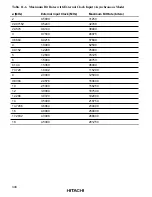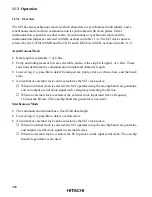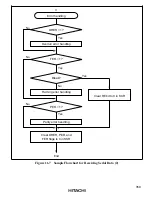
350
11.3 Operation
11.3.1 Overview
The SCI has an asynchronous mode in which characters are synchronized individually, and a
synchronous mode in which communication is synchronized with clock pulses. Serial
communication is possible in either mode. Asynchronous or synchronous mode and the
communication format are selected in SMR, as shown in table 11-8. The SCI clock source is
selected by the C/
A
bit in SMR and the CKE1 and CKE0 bits in SCR, as shown in table 11-9.
Asynchronous Mode
•
Data length is selectable: 7 or 8 bits.
•
Parity and multiprocessor bits are selectable, and so is the stop bit length (1 or 2 bits). These
selections determine the communication format and character length.
•
In receiving, it is possible to detect framing errors, parity errors, overrun errors, and the break
state.
•
An internal or external clock can be selected as the SCI clock source.
When an internal clock is selected, the SCI operates using the on-chip baud rate generator,
and can output a serial clock signal with a frequency matching the bit rate.
When an external clock is selected, the external clock input must have a frequency
16 times the bit rate. (The on-chip baud rate generator is not used.)
Synchronous Mode
•
The communication format has a fixed 8-bit data length.
•
In receiving, it is possible to detect overrun errors.
•
An internal or external clock can be selected as the SCI clock source.
When an internal clock is selected, the SCI operates using the on-chip baud rate generator,
and outputs a serial clock signal to external devices.
When an external clock is selected, the SCI operates on the input serial clock. The on-chip
baud rate generator is not used.















































